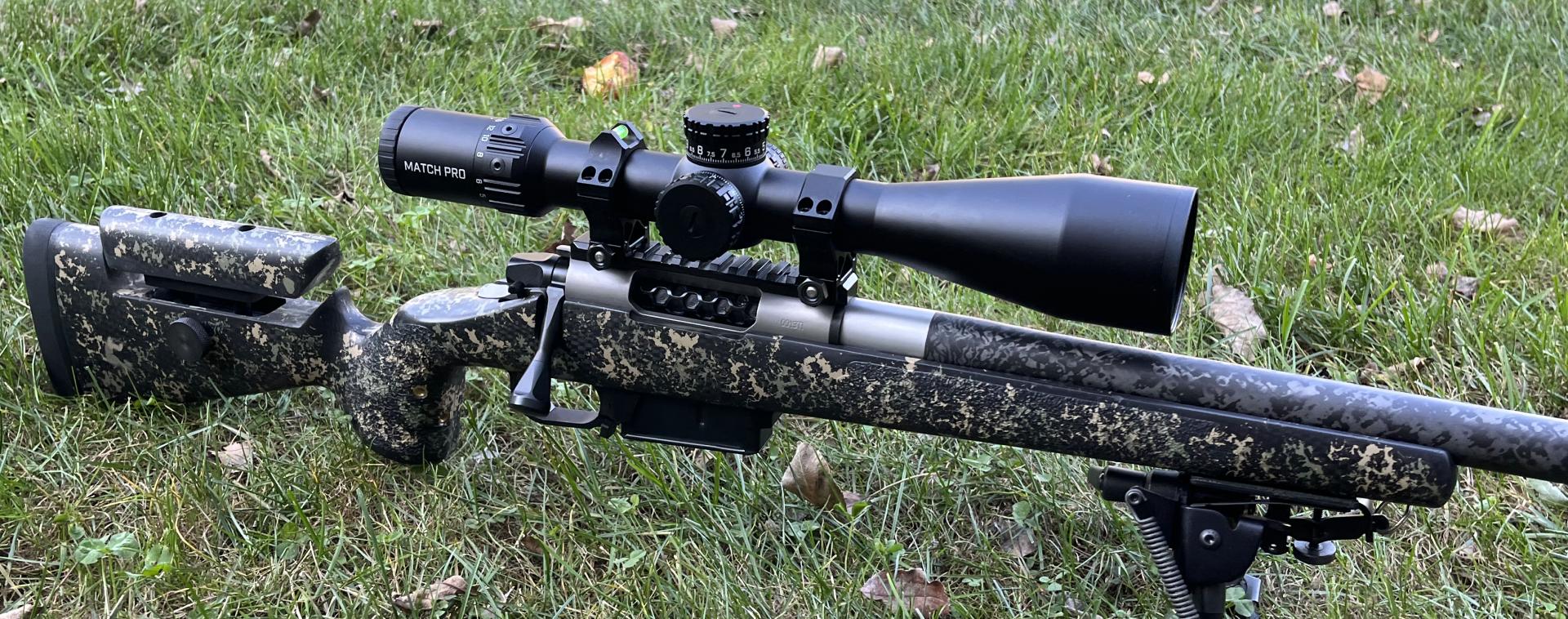I've been reading reviews on scopes from bigjimfish and from other reviewers and customers about different scopes and noticed that on some scopes that their zero stop feature limits the internal elevation in the scope. So, if a scope manufacturer says their scope has 100 MOA / 27 Mil of internal elevation adjustment that is usually BEFORE the zero stop was set/screwed in place by the buyer. After the zero stop adjustment is set it is well below 100 MOA / 37 Mil.
Here is a small list of some scopes below that have this problem...
Vortex Strike Eagle 5-25×56 34mm:
Internal elevation: 110 MOR or 32 Mil...
A reviewer wrote this about the Vortex Strike Eagle 5-25×56: “This design has a small disadvantage. When the RevStop™ ring is inserted, a bit of the elevation range gets lost. It goes from 110 MOA to 47 MOA when the zero stop is used so you lose over 60% of the available elevation, I’d call that a lot more than a bit! The fact that Vortex isn’t putting that info anywhere but hiding it in the manual, is extremely misleading knowing that customers are absolutely going to want to use the zero stop feature."
Meopta Optika 6 5-30x56...
Internal elevation: 110 MOA / 32 Mils
bigjimfish: "The zero stop on the Optika6 scopes is a unique system. I have illustrated how to change it in the illustration below. You will note that, due to its unique cog-based system, use of the zero stop system will limit the maximum elevation range to a little less than three full revolutions. This comes out to somewhere around 28 mils total travel, which is a lot."

 www.snipershide.com
www.snipershide.com
Bushnell Match Pro ED 5-30x56...
Internal elevation: 103 MOA / 30 Mil
bigjimfish: "I would also add a little more movement range to the zero stop system to increase the travel, as it currently maxes out at 26 mils. This could possibly limit your travel a bit as the scope has about 29.4 mils of internal travel. Given all the factors involved in mounting and such, in practice it is vanishing unlikely too limit you in practice, but in theory, it could."

 www.snipershide.com
www.snipershide.com
I have a couple questions...
Are there any scopes out there that once the zero stop is enabled/set that it does not limit or effect the scopes' internal elevation? Is there a way to set a zero stop in the scope to not effect internal elevation? Do you set it below 0 like a -0.5 or something? I'm ignorant on how that works.
Is zero stop really that important to have? Is it necessary? I personally would like all the internal elevation adjustment I can get since I will be shooting past 2000+ yards with 300 PRC with a 40 MOA base and not want to lose my zero at 100 yards. I would need a scope with at least 100 MOA / 27 Mil of internal elevation adjustment for that.
Here is a small list of some scopes below that have this problem...
Vortex Strike Eagle 5-25×56 34mm:
Internal elevation: 110 MOR or 32 Mil...
A reviewer wrote this about the Vortex Strike Eagle 5-25×56: “This design has a small disadvantage. When the RevStop™ ring is inserted, a bit of the elevation range gets lost. It goes from 110 MOA to 47 MOA when the zero stop is used so you lose over 60% of the available elevation, I’d call that a lot more than a bit! The fact that Vortex isn’t putting that info anywhere but hiding it in the manual, is extremely misleading knowing that customers are absolutely going to want to use the zero stop feature."
Meopta Optika 6 5-30x56...
Internal elevation: 110 MOA / 32 Mils
bigjimfish: "The zero stop on the Optika6 scopes is a unique system. I have illustrated how to change it in the illustration below. You will note that, due to its unique cog-based system, use of the zero stop system will limit the maximum elevation range to a little less than three full revolutions. This comes out to somewhere around 28 mils total travel, which is a lot."

BigJimFish's Meopta Optika6 5-30x56 RD FFP Scope Review
BigJimFish Reviews Meopta Optika6 5-30x56 RD FFP zero stop scope as part of the Sub $1k Optics review series.
 www.snipershide.com
www.snipershide.com Bushnell Match Pro ED 5-30x56...
Internal elevation: 103 MOA / 30 Mil
bigjimfish: "I would also add a little more movement range to the zero stop system to increase the travel, as it currently maxes out at 26 mils. This could possibly limit your travel a bit as the scope has about 29.4 mils of internal travel. Given all the factors involved in mounting and such, in practice it is vanishing unlikely too limit you in practice, but in theory, it could."

Review of the Bushnell Match Pro ED 5-30x56mm Rifle Scope
BigJimFish reviews the new Bushnell Match Pro ED 5-30x56mm Rifle Scope
 www.snipershide.com
www.snipershide.com I have a couple questions...
Are there any scopes out there that once the zero stop is enabled/set that it does not limit or effect the scopes' internal elevation? Is there a way to set a zero stop in the scope to not effect internal elevation? Do you set it below 0 like a -0.5 or something? I'm ignorant on how that works.
Is zero stop really that important to have? Is it necessary? I personally would like all the internal elevation adjustment I can get since I will be shooting past 2000+ yards with 300 PRC with a 40 MOA base and not want to lose my zero at 100 yards. I would need a scope with at least 100 MOA / 27 Mil of internal elevation adjustment for that.
Last edited:
